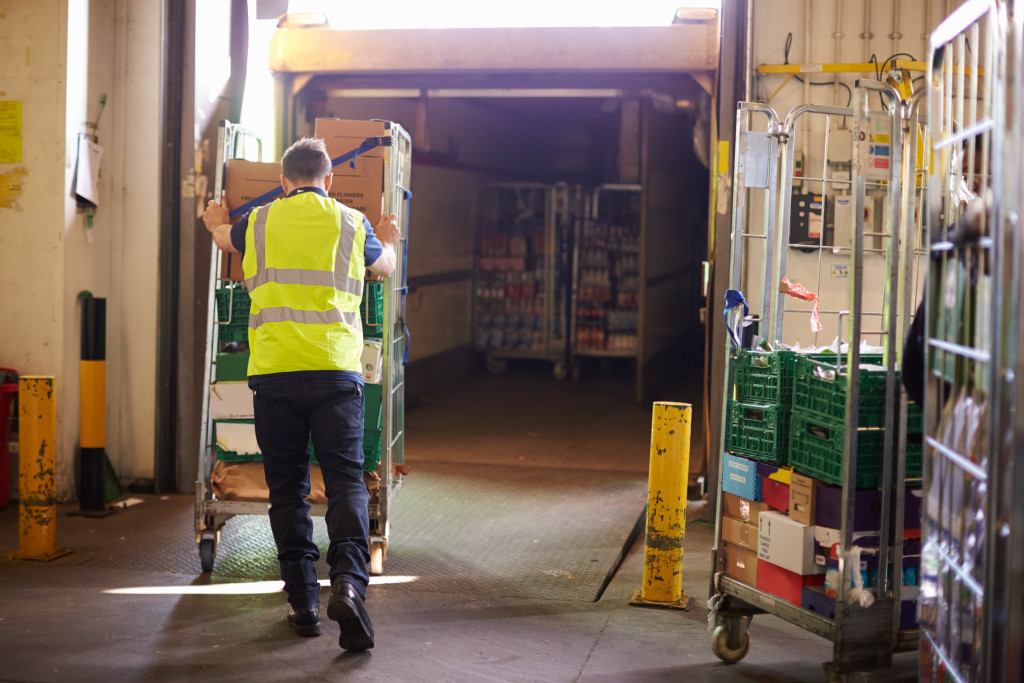Launching a courier business is an excellent opportunity for entrepreneurs. You get the flexibility to set your hours and the freedom to be your own boss. Plus, you don’t need to incur much start-up costs as there are only a few elements that you need, such as a vehicle, communication tools, route planning technology, and legal paperwork. Additionally, all of these can be acquired at relatively little expense. Start-up capital is also unlimited resulting in explosive growth potential if done right. A courier business helps people who need goods delivered quickly and provides an additional income source.
However, running a successful courier business requires careful inventory and personnel management. When the workload is heavy, it can be hard to prioritize tasks, optimize delivery routes, and manage staff without compromising customer service. Here are a few tips to help you handle heavy loads as efficiently as possible:
Create an optimized delivery route
To ensure your couriers can deliver items quickly and efficiently, create an optimized route that leaves time for unexpected delays. This map should consider any traffic or construction issues that may slow the delivery process and include multiple stops along the way. Additionally, try to choose routes with fewer intersections or one-way streets; this will help conserve fuel and save time.
Make sure your vehicles can handle the loads
To ensure that your vehicles can handle the load, you must ensure they are adequately maintained. Regular oil changes, tire rotations, and brake inspections should be prioritized when necessary. This will help prevent breakdowns or other vehicle-related issues from slowing down deliveries.
Additionally, you should have vehicles that are suitable for the job in the first place. Investing in heavy-duty vans or trucks can help to carry heavy loads without putting too much stress on your vehicles. If you already have a complete fleet of vehicles and are unable to purchase more, you can simply upgrade the ones you have by purchasing and installing steel flatbeds. These can hold more items at a time, ensuring that your deliveries are always on schedule. These are also more durable than traditional flatbeds, making them ideal for transporting heavy or fragile items. This will help you ensure that your deliveries are completed quickly and safely, no matter how heavy the load.
Invest in good technology
Technology can be a great asset when managing a heavy load. Invest in software that helps track shipments, vehicles, personnel, and other key elements of your business. This will ensure that your team always has access to accurate information about current orders and future deliveries. Additionally, having access to real-time updates on shipments can help you make faster decisions when faced with unexpected changes in the workload.
Organize your inventory

An organized inventory tracking system is essential when managing a heavy load. Create a system where all items are clearly labeled so they can be easily located when needed. For example, if you have multiple types of products in your warehouse, consider marking them by type or color-coding them for easy identification. This will save time during the sorting process and help ensure that items are delivered correctly every time.
Provide clear communication
Clear communication is key to managing any heavy load successfully. Make sure your team knows exactly what their responsibilities are before beginning a job, and provide regular updates throughout the day, so everyone is on the same page at all times. Additionally, provide feedback on how each employee performed so they can continue improving their skills over time.
Hire additional staff
If you find yourself regularly dealing with high levels of work volume, it may be worth investing in additional staff members who can help lighten the load for existing personnel. Hiring more people will give you access to more resources and flexibility during peak times when demand is high but supply is low due to seasonal factors like holidays or inclement weather conditions like snowstorms or hurricanes.
Additionally, you may consider hiring temporary staff members who can be easily and quickly brought on board when needed. This will give you more flexibility and the ability to scale your business as required, ensuring that you can always meet customer demand no matter the circumstances.
Handling heavy loads in a courier business doesn’t have to be overwhelming. You can take simple steps to make life easier while ensuring customer satisfaction remains high! By creating an optimized delivery route, making sure your vehicles can handle the loads, investing in good technology, organizing your inventory, providing clear communication, and hiring additional staff members during peak times of year – businesses can take control of their workloads while still guaranteeing prompt deliveries every time! With these essential tips as your guide – running a successful courier business just got easier!
